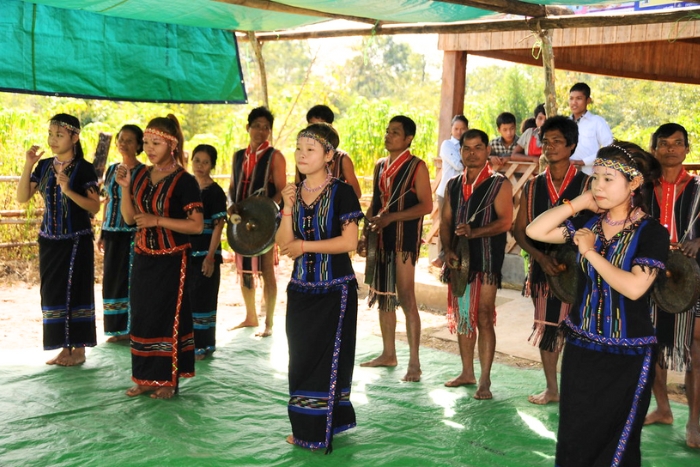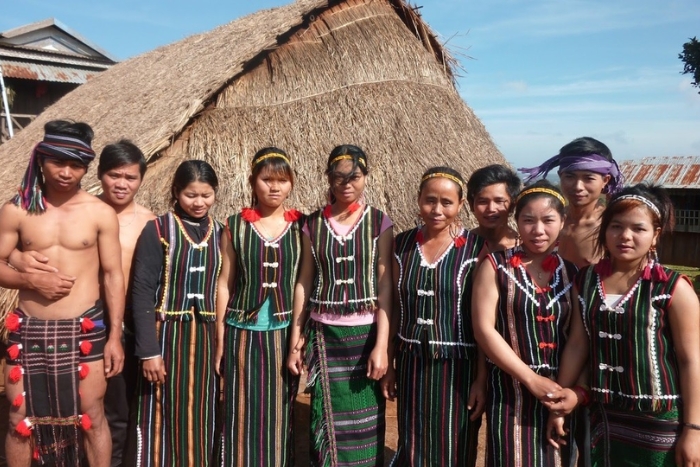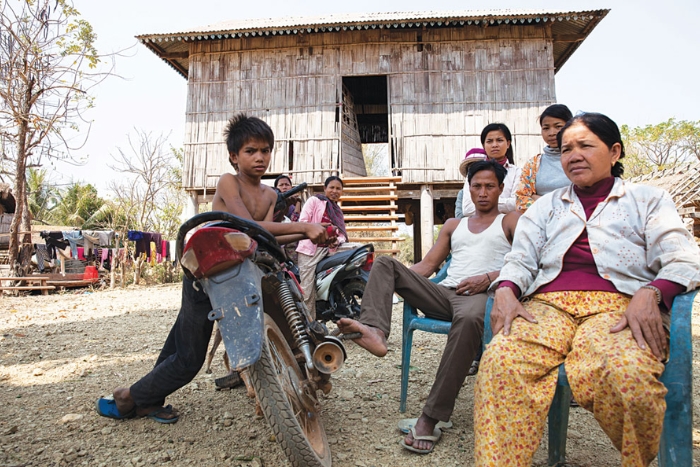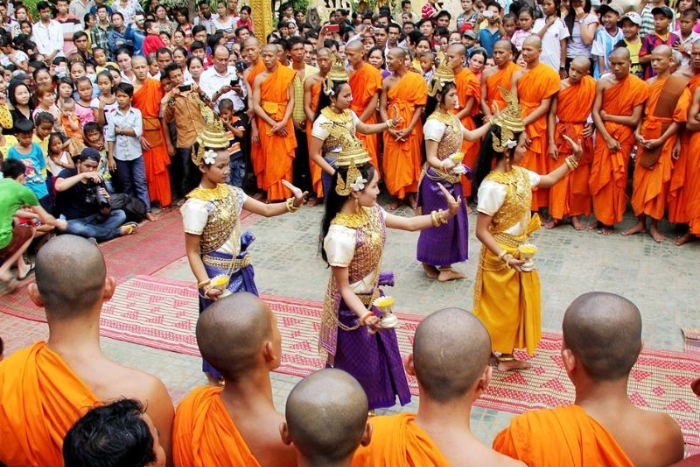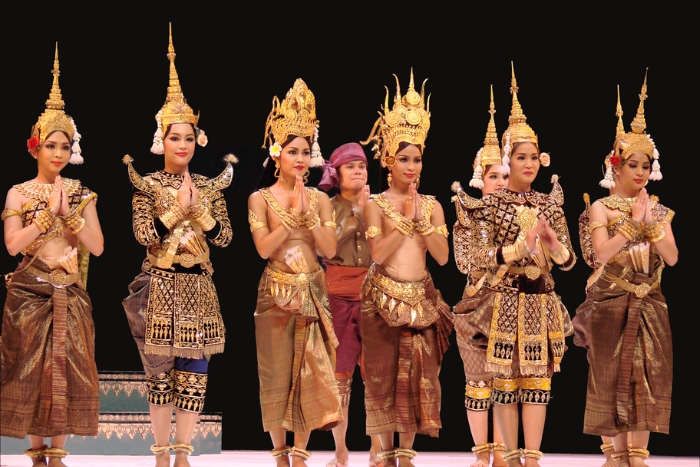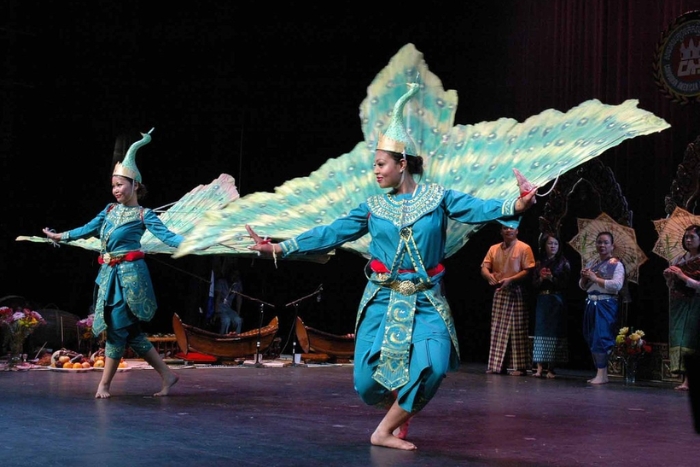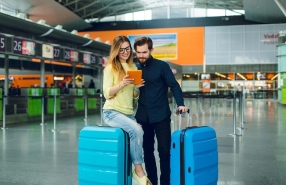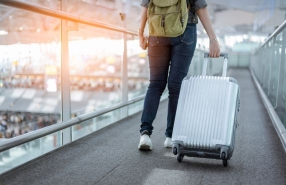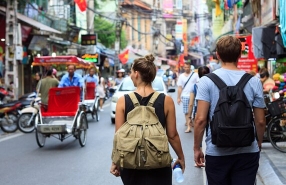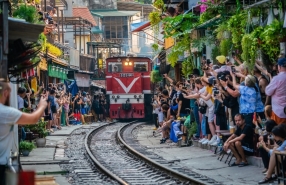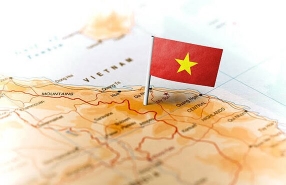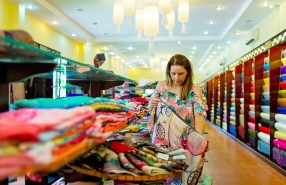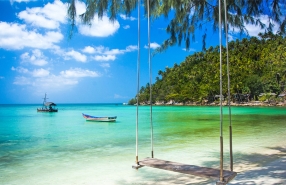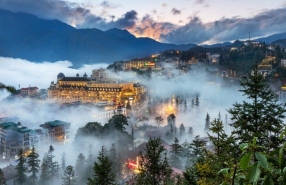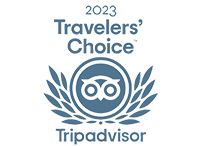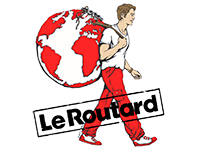
When visiting a country, getting to know its people can also be an enriching experience. With about 30 ethnic groups, Cambodia is a combination of many cultures. Where to visit to see Cambodian ethnic groups? In this article, let's explore with Autour Asia, Cambodia Travel Agency, places where we can visit, meet and explore the lives of ethnic communities in Cambodia.
Where to visit in Cambodia to see ethnic groups?
I. Overview of Cambodia's ethnic groups
Cambodia is a country of great ethnic diversity, with about 30 groups. The majority are Khmer, while various indigenous and non-indigenous minorities enrich the national culture. Ethnic groups in Cambodia reflect a unique cultural mosaic.
The Khmer make up about 90% of the population and live mainly in the Mekong Delta, the Central Delta and around Tonle Sap Lake. Khmer is the official language and the dominant culture of the country. Ethnic groups in Cambodia revolve around this Khmer majority.
The Khmer Loeu, an indigenous minority, inhabits the mountainous provinces such as Ratanakiri, Mondulkiri, Stung Treng and Kratie. They comprise 17 to 21 distinct ethnic groups, speaking Austroasiatic languages. The major ethnic communities in Cambodia include the Kuy, Stieng, Brao, Tampuan, Pear, Jarai and Rade.
Non-indigenous minorities include the Vietnamese, Chinese and Cham. The Vietnamese live mainly in Phnom Penh and the border areas of Vietnam. The Chinese are present in major cities such as Phnom Penh, Battambang and Sihanoukville, where they play a key economic role. The Cham, who are mainly Muslim, are found in Kampong Cham, Pursat and other areas. These ethnic minorities in Cambodia contribute to the richness of the national culture.
Other groups, such as the Tai, Lao and Kola, live in border areas. The Tai are concentrated near Thailand, the Lao in Stung Treng and Kratie, and the Kola in Pailin, descendants of Burmese traders.
II. Where to meet Cambodia's ethnic groups?
Ethnic groups in Cambodia are scattered throughout the country, creating vibrant and unique cultures. From the North, the Center to the South, we can meet and experience the lives of ethnic groups in Cambodia.
1. Northern Cambodia
Ratanakiri is a popular destination for travelers seeking authenticity and wilderness. This mountainous province is inhabited by ethnic groups in Cambodia such as the Tampuan, Brao and Jarai. Visitors can explore traditional villages and participate in local rituals. Natural landscapes, such as the Kachanh Waterfalls and volcanic lakes, add to the region's charm.
Mondulkiri is known for its rolling hills and vast forests. Minorities such as the Bunong (Mnong) live in harmony with nature. Travelers can experience local traditions by visiting elephant farms and exploring coffee plantations. Bou Sra Waterfall, one of the most impressive waterfalls in the country, is a must-see attraction.
Stung Treng, located along the Mekong River, is a cultural crossroads where several ethnic groups in Cambodia meet, including the Lao and the Khmer Loeu. This province offers an immersion in traditional river life and allows visitors to sail on the Mekong to meet local ethnic communities. The Ramsar reserve is ideal for nature and ecotourism enthusiasts.
Kratie is famous for its Irrawaddy dolphins and peaceful atmosphere. In addition to this iconic attraction, the province is home to ethnic minorities in Cambodia living in the surrounding rural areas. Visitors can explore riverside villages and discover local handicrafts. Kratie is an ideal destination for those who want to combine cultural tourism with wildlife watching.
Click for detailed information:
2. Central Cambodia
Phnom Penh, the capital of Cambodia, is a cultural crossroads where different ethnic groups in Cambodia meet. As you walk around the city, you can discover the Vietnamese community, who live mainly along the rivers. The bustling markets and Chinatowns offer a fascinating glimpse into the Chinese culture that has been rooted here for centuries. Phnom Penh is also an ideal starting point to explore the traditions of the Cham people living nearby.
Kampong Cham is a must-see destination for those who want to meet the Cambodian Cham ethnic group. This province, bordering the Mekong River, is famous for its floating villages and mosques, which are witnesses to the Cham culture and traditions. A visit to this region will allow you to better understand the Muslim influence in Cambodian culture and appreciate the hospitality of the locals.
Pursat province offers a unique immersion into the culture of the Cham and other local ethnic communities. As you explore this region, you can meet Cham artisans and traders who perpetuate traditional skills. Pursat's peaceful landscapes, with its rice fields and traditional villages, offer an authentic and off-the-beaten-track experience.
Siem Reap, famous for the temples of Angkor, is also a meeting place for diverse ethnic groups in Cambodia. In addition to the Khmer, you can also come across Lao and Vietnamese communities. Siem Reap is a tourist hub where ancient culture and living traditions blend. The local markets and surrounding villages are perfect places to discover Cambodia's cultural diversity.
You may be interested in:
3. Southern Cambodia
Pailin, located in western Cambodia, is a province famous for its gemstones and mountainous landscapes. The region is inhabited by the Kola ethnic group, originally from Myanmar. By visiting Pailin, travelers have the opportunity to explore local traditions and meet ethnic communities in Cambodia who make a living from gemstone mining and agriculture. It is an ideal destination for those who wish to discover the history of cultural exchange between Cambodia and Myanmar.
In addition to its seaside appeal, Sihanoukville is home to a large Chinese community, one of the ethnic groups in Cambodia that plays a key role in economic and tourism development. Visitors can experience bustling markets, Chinese temples, and traditional festivals, offering a fascinating insight into this cultural coexistence.
III. Tips for an Authentic Encounter with Cambodian Ethnic Groups
An authentic encounter is based on mutual respect, open-mindedness, and honesty. For an authentic encounter with Cambodian ethnic groups, here are some things to keep in mind
- Respect the customs and traditions of each ethnic group in Cambodia. Each ethnic community in Cambodia has its own particularities, so finding out in advance can help avoid any awkwardness.
- Show a genuine interest in their culture and way of life. Asking questions about their customs, cuisine, or festivals can be a good way to build rapport.
- Use respectful language. Cambodians place great importance on respect, especially toward elders. Words like “Som” (please) or “Arkun” (thank you) are always well received.
- Ask permission before taking photos. Some ethnic groups in Cambodia prefer not to be photographed, especially in religious or festive contexts. It is therefore important to always ask before taking photos.
- Respect religious rituals. When visiting temples or sacred sites, it is essential to wear appropriate attire and follow local rules, such as removing your shoes before entering.
Cambodia offers a unique cultural richness through its diverse Cambodian ethnic groups that span the country’s three regions: the north, central and south. Whether in the big, vibrant cities or in the remote mountainous regions, travelers can experience authentic Cambodian culture, marked by a harmonious fusion of traditions from multiple ethnic communities in Cambodia. This diversity enriches the country’s heritage and offers each visitor the opportunity to discover the unique customs, languages and lifestyle of ethnic groups in Cambodia, making Cambodia a memorable destination for all.
Which tour to follow to meet the ethnic groups in Cambodia?
The 10 day Cambodia Tour through Kampong Cham and Kratie offers a rich cultural experience. This tour highlights Laos villages, ancient temples, and the unique lifestyle along the Mekong River. In Kratie, visitors can interact with ethnic minorities, witness traditional crafts, and observe the rare Irrawaddy dolphins.
When is the best time to go to Cambodia?
The best time to visit Cambodia is from November to April, during the dry season. The climate is pleasant, with moderate temperatures and little rain, ideal for exploring the temples of Angkor, beaches and mountainous regions. The roads are more passable and several cultural festivals take place during this period.
Where to go to meet the hill tribe communities in Cambodia?
The provinces of Ratanakiri and Mondulkiri, located in the northeast of Cambodia, are ideal destinations to meet Cambodian ethnic groups such as the Bunong and Kreung. These regions are known for their wilderness and traditional villages.

